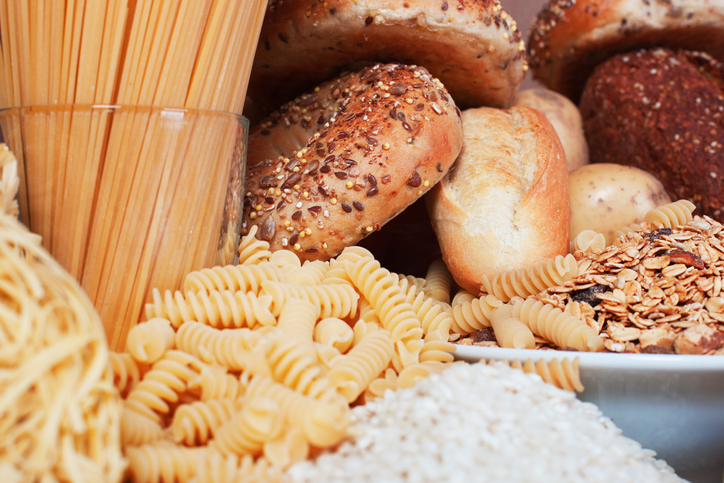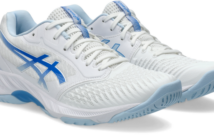Accredited practicing dietitian, exercise physiologist and CEO and co-founder of Be Fit Food, Kate Save explains how to shred body fat for men, while maintaining muscle.
- Choose your excess calories wisely as not all calories are equal
- Each macronutrient (Carbs/Proteins/Fats) is metabolised and stored differently in the body.
- Carbs and protein both have 4 calories per gram whereas fat has 9 calories per gram, therefore it is important to monitor overall caloric intake for effective weight loss.
- Where weight loss becomes more complicated is that to burn off the different macronutrients in the body there is a different mechanism and preference for each.

- Carbs generally are burnt off first, but unfortunately in Western society we tend to eat more than we can burn off in one sitting, meaning they get stored in our bodies for later. Given there is a limit of carb storage in the muscles and the liver of only 1.5kg approx., carbs can be converted to body fat via the insulin pathways when the muscle and liver stores are full. Insulin is a ‘fat storage hormone’ and is triggered by carbohydrate intake and only excess goes to fat stores. Therefore, managing carb intake carefully or choosing a low carb diet is helpful for stripping body fat.
- Not surprisingly, excess protein and fat can also lead to excess weight gain as they are both an energy source that needs to be effectively used up by the body, otherwise excess is also stored as body fat.
- Choosing an optimal protein load per day is important and for most of us, our bodies can only digest around 20-30g protein per 2-3 hours, meaning too much more can affect body composition.
- For nutritional programming for optimal shredding, advice from an Accredited Practicing Dietitian is important. Be Fit Food offers free dietitian advice with any of their low carb and weight loss programs.
- Burning Body Fat is a Science – Mild Nutritional Ketosis is the Key
- The best dietary approach body fat reduction is a low carb diet combined with appropriate calorie restriction to induce a state of Mild Nutritional Ketosis (fat burning state).
- Mild Nutritional Ketosis occurs when the body is deriving its energy from ketones (fat) instead of glucose, and unlike true ‘’KETO’’ diets which can be 80-90% fat, Mild Keto tells your body to burn its own body fat stores rather than fat from the diet that you consume. Mild Keto diets also allow you to eat a more balanced diet when it comes to carbs, proteins and fats as although these are restricted, they are in balance around 20-30% carbs, 20-30% protein and 30-50% fat depending on your weight loss goals and calorie requirements. Keto diets are closer to 5-10% carbs, 10-20% protein and 70-90% fats.
- To put it simply, the cells in our body prefer to use glucose (which your body gets from carbohydrate sources) as a source of energy. When you deprive your cells of their preferred energy source, your liver starts producing ketone bodies from stored body fat that can be used as a source of energy in the absence of glucose.
- When you reduce your carbohydrate intake you also release less insulin (the fat storage hormone that is produced by our pancreas in response to glucose from carbs), so with less circulating insulin, the body has less ability to store body fat.
- Protein in excess can be converted to Body Fat
- Muscles (and many other components of our body) are made up of protein, which highlights protein as an important nutrient for the maintenance of fat-free mass, especially when combined with exercise and strength training.
- However, when your macronutrient balance and caloric intake is incorrect or if you are simply consuming too much extra protein compared to what your body needs, the protein will then be converted to and stored as body fat (i.e. increasing body fat stores).
- Carbs are a fuel for exercise, but they take the place of burning body fat

- It is true, carbohydrates can assist you with the energy you need to participate in exercise whether it be a run, HIIT workout or even yoga. This is primarily because carbohydrates or glucose are utilised quickly and easily by the muscles and by your body. This is because it is absorbed faster and is readily available, whereas dietary sources of fat and protein take a longer time to get absorbed and are too busy with other jobs in the body such as muscle growth and ensuring your joints are cushioned.
- However, protein and fat can be used as an energy source when glucose is absent from the diet or stores in the body are depleted.
- Therefore, in order to ‘optimise’ fat burning, a low carbohydrate intake is recommended to ensure your protein intake can be directed to muscle repair or muscle building whilst your body fat stores can be used as a back up energy supply when carbs are low.
- Hydrating without the calories – choose your fluids wisely
- Your body needs water to function properly – water is essential for the function of cells, tissues, organs and is vital for digestion and excretion of waste products.
- The amount of water you need depends on your age and activity level. If you are a healthy adult under the age of 65 years, you require 35-45ml per kilo of body weight.

- Water should be the choice of drink when it comes to hydrating – it’s calorie-free, with no added sugar or preservatives.
- There are a lot of pre-packaged vitamin waters, energy drinks and juices that are marketed as healthy however they contain nasty ingredients and usually a high sugar content which can inhibit body fat reduction.
- Balancing your macros
- Balancing your intake each day for your individual goals should be guided by an Accredited Practising Dietitian – this is because what you need is different to that of someone else. Be Fit Food offers free dietitian advice with any of their low carb and weight loss programs.




